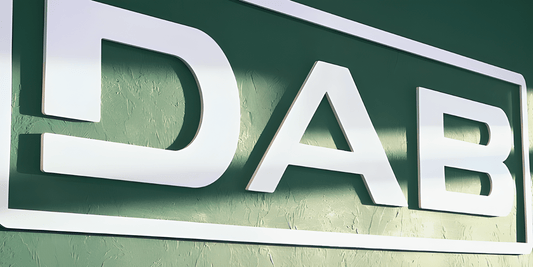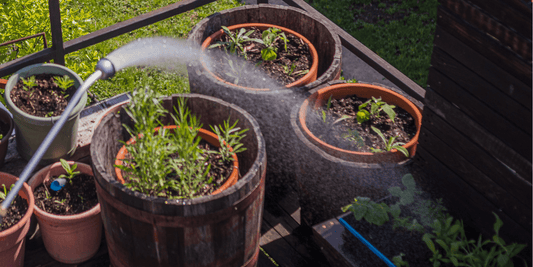
How to Choose the Right Water Pump for Your Garden
Share
If your garden hose has more of a light sneeze than a power shower, you’re probably ready to invest in a proper water pump. Whether you’re a homeowner looking to streamline your watering routine or a trade buyer for landscaping clients, choosing the right garden pump can save time, money and water.
This guide breaks down how to pick the perfect pump, based on our most popular models and setups.
Why a Garden Water Pump Is a Smart Investment
A water pump for your garden completely changes how you'll manage your outdoor space. Many UK households struggle with weak outdoor taps, but a good pump boosts water pressure so your hose works properly. When paired with timers or sensors, pumps can take over your watering routine entirely, freeing you up for other things.
This consistent and reliable water supply helps gardens stay healthy and thriving, even during hosepipe bans or scorching heatwaves. Plus, pumps make rainwater harvesting systems really practical, closing the loop on sustainable gardening and helping you make the most of every drop.

5 Things to Consider Before Buying
-
What is your water source?
Pumps need to be compatible with where you’re pulling water from—rain barrels, underground tanks, wells or ponds all have different access needs. -
Where will the water go?
Knowing whether you’re feeding a hose, sprinkler, irrigation system or greenhouse helps you choose a pump with the right flow rate and pressure. -
How far and high is the water travelling?
The height (or “head”) and length of pipe or hose affect how hard the pump needs to work; choose a pump that can comfortably overcome this. -
Do you want it automatic or manual?
Automatic pumps turn on when you open a tap or the system detects flow; manual pumps need switching on and off each time you use them. -
How much noise is acceptable?
Some pumps are near-silent (especially submersible models), while others hum loudly; noise level matters for peace in the garden or in residential areas.

The Difference Between Surface and Submersible Pumps
1. Surface/Jet Pumps – Best for Shallow Water Sources
Jet pumps are surface-mounted, meaning they sit outside the water source and use suction to draw water up.
- Self-priming: These pumps can fill themselves with water even after air enters the system, saving you hassle with restarting.
- Good pressure output: They deliver consistent pressure suitable for hosepipes and sprinklers, making watering more efficient.
- Easy to fit and maintain: Being out of the water, jet pumps are easier to access for servicing or part replacements.
- Example model: The Lowara BG Jet Pump delivers up to 4.2 m³/hour and handles domestic or light commercial needs with ease.
- Perfect for: Gardeners using above-ground rain tanks or shallow wells with a relatively short pipe run.
2. Submersible Pumps – Quiet and Discreet
These go directly into the water source, pushing water rather than pulling it.
- Ultra-quiet operation: Because they run underwater, the noise is barely noticeable, keeping your garden a calm retreat.
- Automatic control: Pumps like the DAB Divertron 650 or 900 detect pressure drops and turn on without manual input.
- Compact and out-of-sight: With no bulky external hardware, they sit neatly in a tank or barrel and don’t clutter your garden.
- Built-in protection: Features like dry-run and thermal protection help prevent motor damage from low water levels or overheating.
- Perfect for: Homes with rainwater harvesting systems or anyone who wants a quiet, automated setup.

Choosing the Right Pump for the Right Garden Size
When it comes to choosing the right pump for your garden, think about the size and water source first. For a small patio area using a rainwater butt, a jet pump or a small submersible like the Pedrollo PK Impeller Pump works perfectly. If you have a medium-large sized garden with an underground rain tank, a high-output submersible pump like the DAB Divertron 900 delivers the power and flow you need.
Tips for Smoother Installation
- Position the pump close to the water source to minimise suction loss and improve efficiency. Less distance means less strain.
- Install a non-return valve at the pump outlet to prevent water flowing back and causing airlocks in the system.
- Use a debris filter on the intake to block leaves, sediment or sludge from clogging or damaging the pump.
- Match pump capacity to irrigation design by calculating head height and flow requirements to ensure proper performance.
- Consider pump housing or mounts to reduce vibration and noise if you’re using a surface pump in a quiet area.

For Trade & Commercial Buyers
If you’re working in landscaping, contracting or property development, we can provide more than just off-the-shelf gear.
- Technical guidance on system design, sizing and spec matching saves time and ensures smooth project delivery.
- Higher-grade commercial models are available for large-scale sites or communal systems with high water demand.
- Timely delivery across the UK to keep your project on track and prevent delays on site.
Need Help Choosing?
We’re always happy to help. Whether it’s your first water pump or you’re kitting out a full irrigation network, our team at Waterwise Pumps offers expert advice that’s grounded in real-world experience.
Call 01872 228447 or email enquiries@waterwisepumps.co.uk to speak to someone who knows the ins and outs of these garden pump systems.

Conclusion
A garden water pump isn’t just about convenience, it’s a smart investment in sustainability, efficiency and ease. Whether you're topping up your pond, running sprinklers on a timer, or keeping a greenhouse hydrated, the right pump keeps things flowing. Explore Waterwise’s full range of clean water pumps.



